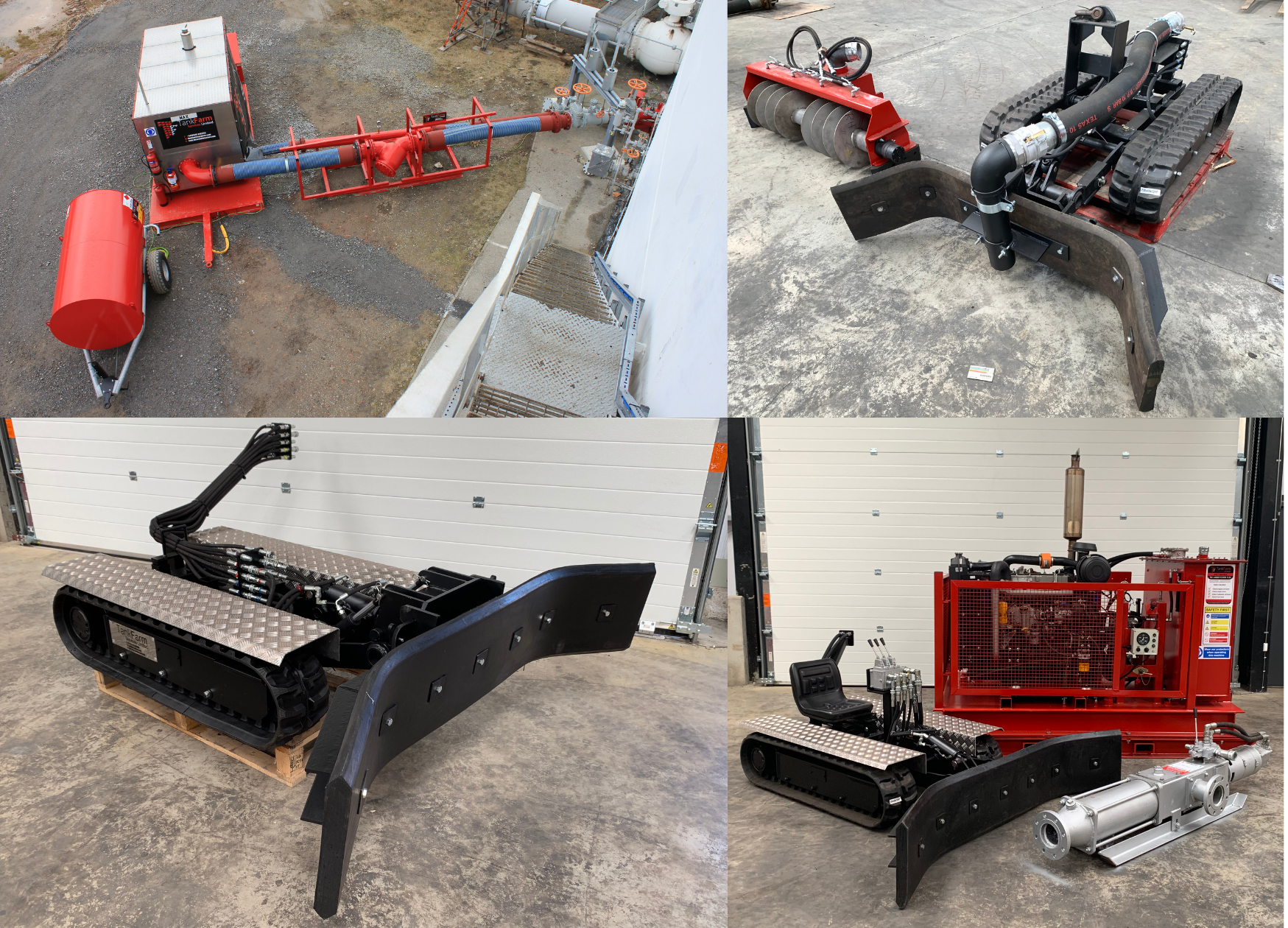Incorporated in 1995, Tank Farm Services ltd manufacture and operate a range of equipment to enable safe and efficient removal of sludge from confined spaces whilst eliminating or minimising confined space entry. Sludges and silts formed in tanks, lagoons and confined spaces such as pits and interceptors present the industry with significant health safety and environmental issues. TFS excel in providing bespoke equipment solutions to meet the demands of customer specific requirements.
Oil and Gas companies demand the use of best available technology. The method of desludging and cleaning has constantly evolved to meet ever changing legislative and regulatory requirements, is it no longer acceptable to allow teams of cleaners into confined spaces.
While safety remains the primary focus, industry now demands that:
- Man entry is removed or minimised.
- Waste streams are reduced, recycled or reclaimed.
- Tank, vessel or equipment outages are reduced or eliminated.
Survey
A topographic survey is designed to accurately locate and quantify sludge, by identifying the location, height and volume of the sludge. Tank owners can then assess how the tank clean is approached and whether it is advantageous to carry out no entry desludging or progress straight to robotic cleaning.
On Line Desludging
For significant tank bottom sludge accumulations contained in bulk storage tank, the use of Jet Mixing Cannons will have a dramatic effect scale of the tank clean, up to 95% of the accumulated tank bottom sludge comprises of hydrocarbon which can be recovered by the cannon process. Closed loop cannon systems are installed while the tank remains fully in service, once installed crude oil is pumped from the tank and recirculated back through the cannon nozzle which directs a submerged jet of oil across the tank floor, this action rehomogenises and resuspends the accumulated hydrocarbons into overhead product.
Final Clean
Tank cleaning dozers are not new technology in fact mini tracked “Dozers” or “Hydrodozers” have been used extensively throughout the industry in various guises since the mid eighties for desludging bulk storage tanks and confined spaces. Dozers are internationally recognised as a major contributor to safety, reducing the risk exposure and the physical demands imposed on a manual cleaning operatives while increasing the efficiency of the clean.
Able to operate in zone 1 classified areas, dozers are hydraulically powered with hydraulic umbilical lines extending from the rear of the dozer and connected to a hydraulic powerpack that’s located in either a zone 2 classified area or safe area. Traditionally dozers are “ride on”, supplied as fixed frame units or in component form for insertion through a tank or vessel manway. Ride on dozer are controlled and manoeuvred around the tank by its operative, if operated in harmful or oxygen deficient atmospheres breathing apparatus must be worn. Breathing air lines are provided within the hydraulic umbilical lines and routed to a breathing air supply outside the tank, more commonly breathing air is supplied from an “Air Barrel” mounted on the rear of the dozer, removing the requirement for trailing BA lines. Dozers have the option of being supplied with a variety of front end attachments which can be quickly interchanged to suit the tank or confined space being desludged. Attachments include rubber dozer blade, rubber dozer blade with suction point, auger with suction point, rotary tiller, clam shell bucket, rotary sweeping brush or bespoke to suit customers requirements.
Remote controlled dozers or robots do not require man entry and are increasing employed for desludging and cleaning activities. Remote controlled dozers are either craned into pits or driven directly into tanks through an open manway, a door or through a shell of the tank where a section has been cold cut away, the latter is normally employed where the accumulated sludge volume is significant and opening the manway door cannot be carried out safely.
The main difference between ride on and remote dozers is the operator remains outside the confined space, controlling the dozer from a safe area. Remote dozers are particularly suited to pit desludging, being able to operate fully submerged allowing the desludging to take place while the clients plant remains fully operational. Desludging is affected either by means of front end auger attachment coupled via pipeline to a vacuum tanker, or an onboard hydraulic operated submersible pump, the pumped products are directed to either centrifuge, belt press or dewatering box for further processing.
Without question remote Zone 1 dozers and Zone 0 robots are the future of tank cleaning, Remote desludging and cleaning tanks can in many cases be carried out without man entry, however the type of tank, its design and the standard of cleaning required will ultimately dictate this. Robot operators may claim that their “process” is 100% no man entry, and while their “process” maybe 100% no man entry it does not mean that tanks are 100% clean and sludge free and man entry won’t be required.
Finished product tanks that do not contain internal obstacles such as roof legs and contain minimal volumes of sludge are obviously easier to desludge than a crude oil tank containing over 200 legs to manoeuvre around. Although the bulk of desludge / cleaning maybe achievable man entry is still required for final cleaning to hot work and removal of any entrapped sludge e.g. contained inside roof legs seal removal etc. Tanks containing coils are also problematical, especially in cases the coils are mounted low to the tank floor and have multiple floor clamps to manoeuvre around.
Ultimately any sludge or cleaning that can be carried out remotely is a step in the right direction however tank owners should taper their expectations accordingly as man entry will ultimately be required.
If you would like to know more about how Tank Farm Services Ltd can help your company and its operations, please contact them at:
Tank Farm Services Ltd
T: +44 0115 976 1123
E This email address is being protected from spambots. You need JavaScript enabled to view it.
W: https://www.tankfarmservices.co.uk



